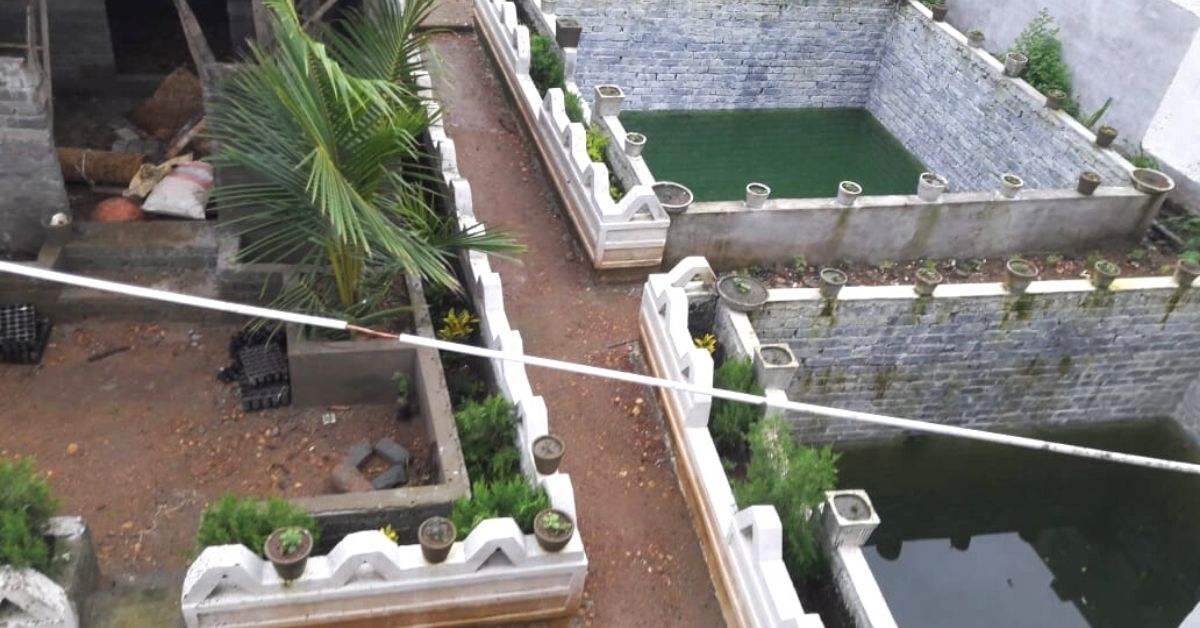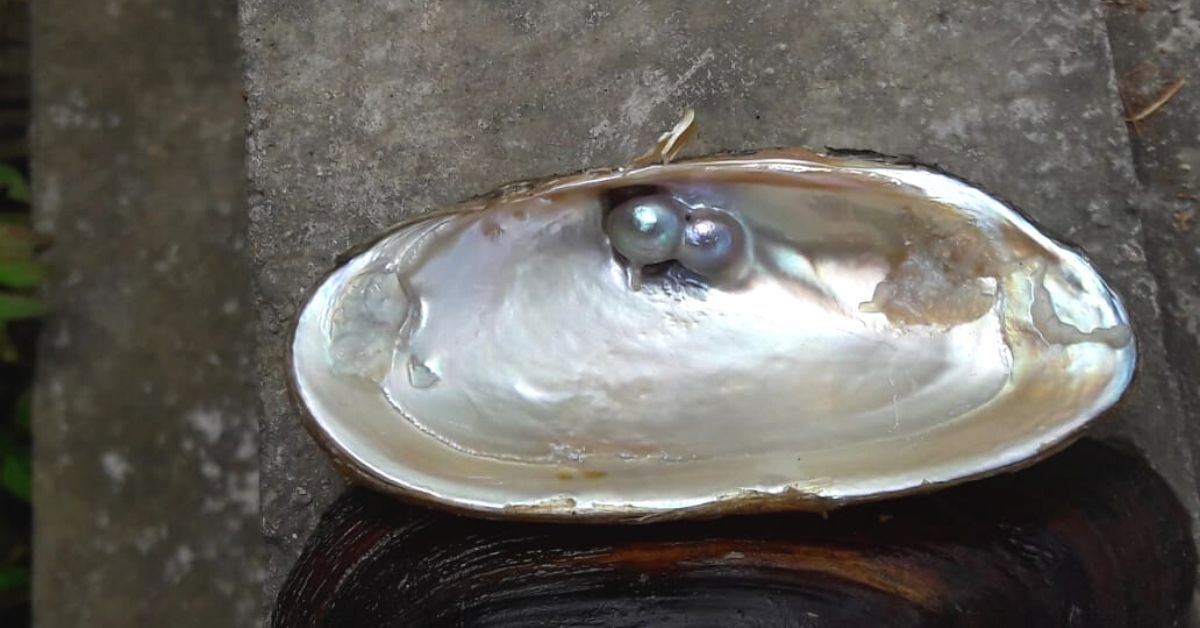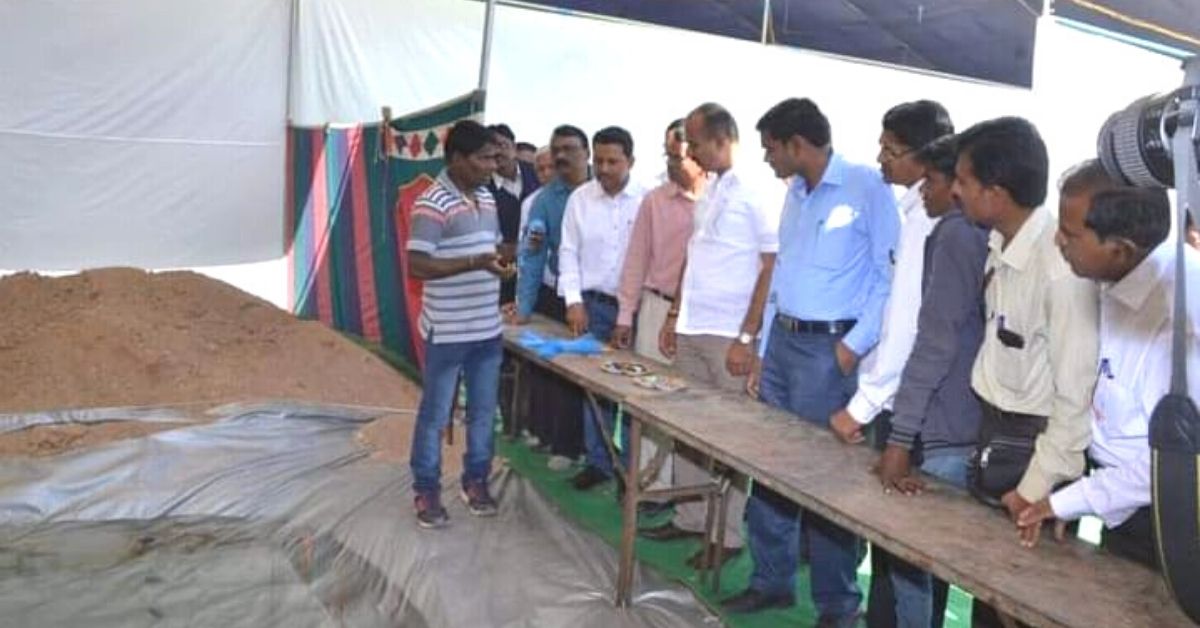Despite Theft & Vandalism, Dedicated Farmer Grows Pearls To Earn Rs 22 Lakh/Year
Maharashtra farmer Sanjay Gandate has braved attacks, theft and even a lack of belief in his ability from loved ones to grow pearls and earn lakhs from it. Here's his story

Sanjay Gandate from Pardi Kupi village has turned his childlike curiosity into a passion and is earning lakhs from it.
The Maharashtra resident spent most of his childhood along the banks of river Vainganga, where his grandfather owned a three-acre agricultural land.
In a conversation with The Better India, he recalls, “I used to walk half a kilometre from home with my grandfather to tend to the farm, and played with shells in the river water while he herded cattle and grew jowar and paddy.”
Sanjay says that he would often open the shells and oysters found along the river bank, curious to see what was within. “I wanted to know how pearls were formed. I’d heard many fables and stories about them from my grandfather and friends,” he says.
Today, these pearls have proved to be more than precious for Sanjay. He relates his story.
Drowning in failures

The 38-year-old admits that growing pearls was never part of his career plan. “I wanted to be a teacher. But despite my qualifications, I couldn’t find a job,” he says. Later, he pursued graduation in law, but was not satisfied with the academic qualification and job prospects.
So he decided to return to his childhood love for pearls and oysters. He reached out to the Krishi Vigyan Kendra, a department of agriculture that guides farmers with innovative ideas in farming.
“In 2010, I approached officer Sandeep Karade and told him my childhood experiences with oysters and wanting to explore pearl farming. He did some research on the subject and shared content from the internet to make me abreast of the technical and scientific terms in pearl farming,” he says.
Over weeks, Sanjay learned about technicalities and took training in growing oysters.
However, many challenges lay ahead.
“There was no pond on the ancestral land, and my grandfather and father did not believe that growing pearls could earn us decent income. They refused to give me space to create a pond for my experiment,” he says.
So Sanjay decided to grow pearls in mugs. “I put about ten oysters in each and followed the required procedure. However, I was frequently checking on them which caused certain disturbances, and the oysters could not survive.”
He then decided to seek help from his farmer friends. “I requested them to create small ponds for growing oysters, and they agreed. However, just about a year later, when the oysters were ready for harvest, the ponds were destroyed by Naxalites in the region. There was no reason for the incident to occur, but all the time and effort I had invested was lost. The next location had to be safer and more promising,” he says.

In 2013, Sanjay identified a person who owned a private pond. “I asked him if I could rent it. But a few months later, the oysters were stolen. I incurred a loss of Rs 7 lakh in the process. All my experiments were failing and I had no financial support to sustain longer,” he adds.
But Sanjay refused to give up. “I decided to construct three small tanks on my verandah. The move enabled me to keep a watch on the oysters and not rely on the mercy of others,” he says.
Today, he is growing 22,000 pearls and earns Rs 22 lakh per year from them. “I grow oysters in my nursery for which I invest about Rs 50,000. The remaining is profit,” he adds.
A ‘solution to relieve debts’
Sanjay says he has mastered the art of pearl culturing. He creates medicine, desired water conditions, maintains temperature and conducts surgery to infiltrate sand that develops into pearls.
“I use 11 herbs and flowers to feed the oysters and avoid artificial products and chemicals. Like other marine species, oysters are also living beings and need care accordingly,” Sanjay says.
He adds, “The natural food for pearls is algae and other green material found in water. I introduce leafy and organic food that often turns into algae and supports the oysters’ growth.”
Sanjay says his techniques are natural and the only human interference is while introducing the sand particles inside the oyster. “It should be a 30-second surgery and cannot extend that time frame. The more time it takes to infiltrate the sand, the less are chances of the pearl surviving. Oysters undergo trauma during the process, and hence it should be quick,” he adds.
He says that oysters need to remain undisturbed, and the batch growing in the pond should have a good combination of male and female ones. “A misconception persists that bigger oysters should be used for rearing. Young oysters are cheaper and also easy to cultivate as they adapt to the new environment more easily as compared to bigger ones,” Sanjay explains.
He warns that any chemicals, like insecticides, pesticides or even a soap, falling inside the pond can damage the growth of oysters. “On an average, there’s a 65 per cent survival rate. But the chances dim if such chemicals enter the water,” Sanjay says.

“Growing oysters is a risky affair because if the temperature in the pond changes or weather conditions become extreme, the entire batch is lost. But sincere efforts, care and monitoring can ensure success,” he adds.
Sanjay has also coached around 150 farmers on the ropes of pearl farming, he says.
Rajendra Manvatkar from Buldhana is one such farmer. “I learned about pearl farming about three years ago after reading news about the theft of Sanjay’s farm. I found him on YouTube and watched his videos on pearl farming, and decided to contact him for training.”
Rajendra says he grew 3,400 oysters last year. “It has helped me cover part of my debts without heavy investment,” he adds.
Meanwhile, Sanjay says, “My village falls in Gadchiroli district and is known for Naxals and farmer suicides. I believe that farmers can take up pearl farming as an alternative source of livelihood as it demands fewer investments and has high returns.” He adds that his success has helped to change the mindset of his father as well.
Sanjay adds, “Identifying such alternatives will help farmers relieve themselves of heavy debts and hopefully reduce the instances of farmer suicides.”
Edited by Divya Sethu
If you found our stories insightful, informative, or even just enjoyable, we invite you to consider making a voluntary payment to support the work we do at The Better India. Your contribution helps us continue producing quality content that educates, inspires, and drives positive change.
Choose one of the payment options below for your contribution-
By paying for the stories you value, you directly contribute to sustaining our efforts focused on making a difference in the world. Together, let’s ensure that impactful stories continue to be told and shared, enriching lives and communities alike.
Thank you for your support. Here are some frequently asked questions you might find helpful to know why you are contributing?


This story made me
-
97
-
121
-
89
-
167













